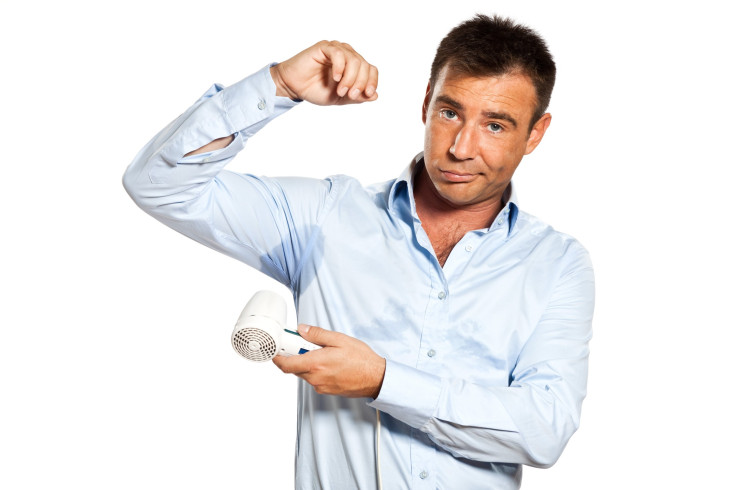The Sweat Set: What Causes Some People To Sweat More Than Others?

Sweating is your body’s way of cooling you off. But for some people, this well-intentioned act of good will can be a helpless curse. According to John Hopkins pediatrician Dr. Kate Puttgen, excessive sweating can be “psychosocially isolating” and debilitating, particularly for children and adolescents. For adults, the inevitable over-production of sweat at work, parties, or the gym can often create its own problems. “Adults have difficulty with social and professional interactions, everything from shaking hands at a business meeting to intimacy,” Puttgen wrote in an email to Medical Daily. So what exactly causes some people to sweat more than others? How does a person become part of — or more importantly get out of — that exclusive club, the sweat set?
To understand excessive sweating, we should first understand why humans naturally sweat. Your body contains about two to five million sweat glands embedded into your skin and located all over your body. These glands secrete different amounts of sweat depending on your physiological characteristics. For example, it’s well known that men’s sweat glands tend to secrete more sweat than women’s. But besides that, how much you sweat depends on some other things, too, like the temperature of the place you’re in, how hard you’re exercising (if you’re working out), your level of anxiety, and your weight. Overweight people sweat more because the body perceives them to need more sweat to cool down. These are all natural differences in the human body. Our bodies, which are inherently different, react to temperature or exercise in different ways. The Columbia University Center for Hyperhydrosis emphasizes “the physiologic response of the autonomic nervous system to exercise or high temperature is normal.” In other words, if you're sweating more than usual after strenuous walking, you probably have nothing to worry about.
So when does excessive sweating become a medical condition?
Sweat Overload: Hyperhidrosis
There are two types of "excessive sweating": one that’s natural to variations in human physiology (as described above) and the other medical, known as a condition called hyperhidrosis. Excessive sweating becomes hyperhidrosis — a condition formally recognized by physicians — when a person begins to sweat excessively in normal, non-stressful, not-overly heated places or situations. Three percent of the population has hyperhidrosis, and physicians have developed several treatments to combat it. Hyperhydrosis affects three main parts, sometimes in combination with another: the hands, feet, and armpits.
“In patients with hyperhidrosis, the autonomic stimulation of the sweat glands in response to stress is hyperactive,” writes the Columbia Center for Hyperhydrosis. During hyperhdrosis, they write, “normal everyday encounters, such as taking notes in school, holding or shaking someone's hand are embarrassing.”
According to Puttgen, the causes behind hyperhidrosis remain largely unknown. “The cause of primary focal hyperhidrosis is not well understood but is thought to originate from overactivity of the sympathetic ‘fight or flight’ nervous system sending aberrant signals to the major sweat glands of the body,” Puttgen said. That means that the part of the body that tries to cool itself off is doing its job but just never shuts off, much like a leaky faucet. Puttgen also says new evidence is currently emerging for a genetic basis of hyperhydrosis, and particular genes causing the condition have been identified.
When is it time to see a physician?
“There are few true medically worrisome [consequences] from increased sweating,” Puttgen said. But when the sweat starts to impact your mental health, that’s when it’s time to seek help. “If people are exhibiting signs or symptoms of depression or social phobia, it is clearly time to intervene, but patients need to know that whatever level of sweating they have that bothers them and prevents them from enjoying life to the fullest deserves consultation with a physician.”
The John Hopkins Center for Sweat Disorders lists several non-surgical treatments for hyperhidrosis. These include oral medications like pills, topical creams, Botox (injected into the hand, face or underarm multiple times), and electrical therapy.



























